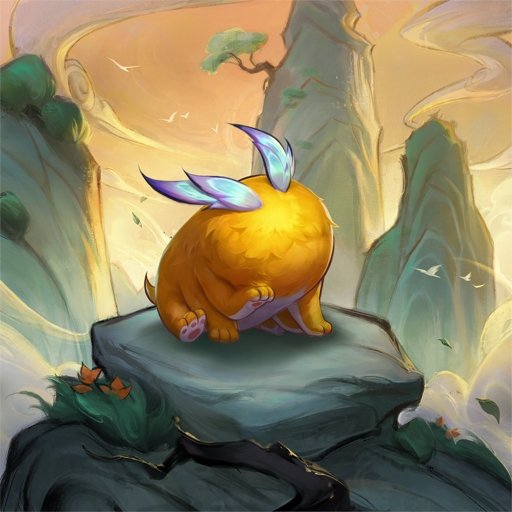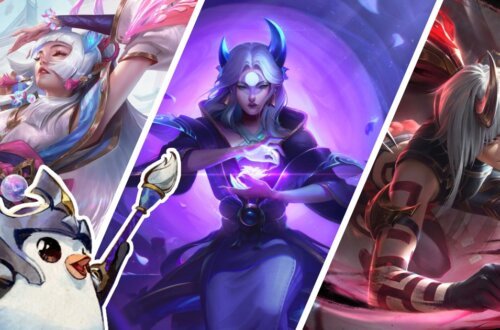
TFT Set 11: The Fascinating Lore in Inkborn Fables (4/4)
Teamfight Tactics Set 11: Inkborn Fables released shortly after the end of League of Legends’s annual Lunar Revel event celebrating the Chinese New Year.
This Lunar New Year filled Riot’s offices with some of its magic and gave TFT Set 11 a particularly East Asian flavor.
As an Asian culture aficionado, I fell in love with Inkborn Fables at first sight and have been playing it nonstop since then.
To give my mind a break from the frustrating experience of rolling for days without hitting my units, I explored the lore behind Set 11’s eleven origin traits.
The result was a multi-part series of articles highlighting the rich historical and mythological tapestry concealed behind TFT Set 11. You can check out the first three parts here:
- Part 1: Mythic, Heavenly, Storyweaver
- Part 2: Porcelain, Fortune, Dragonlord
- Part 3: Fated, Umbral, Inkshadow
After three articles dedicated almost exclusively to East Asia, we’ll turn our attention toward the world at large.
Expect Native American winters, Christian apocalypse revelations, and forest spirits from all over the world as we explore Inkborn Fables’s Ghostly and Dryad traits.
Ghostly

Ghostly units use a modified chroma of either Blood Moon or Snow Moon versions of each champion. Both of these skin lines belong to the Moons of Ionia continuity.
In this seemingly post-apocalyptic universe, two factions fight a brutal war for the future of Ionia:
- Blood Moon Cult: Dark cultists who revere the Blood Moon by performing profane rites to acquire demonic power and become one with darkness.
- Snow Moon Cult: Cold and calculating assassins who offer the Snow Moon their human feelings in exchange for power to cleanse this corrupt world.
What is a Blood Moon?
According to the Merriam-Webster Dictionary, a Blood Moon is “a full moon that coincides with a full lunar eclipse.”

Ancient cultures worldwide marveled at this phenomenon and ascribed diverse meanings—primarily negative.
- In ancient Mesopotamia, the king would hide and be replaced by a body double during the eclipse to avoid any attacks on the regent.
- Both ancient and modern Hindus regard lunar eclipses as an ill omen and perform diverse cleansing rituals when they occur.
- The Christian Bible mentions a blood-red moon and a total solar eclipse as markers that herald the end of days.
This last idea—that the blood moon precedes Judgement Day—still holds sway over modern Christian audiences.
A prime example is preacher John Hagee’s best-selling book, Four Blood Moons, which identified a series of four lunar eclipses between 2014 and 2015 (known as a tetrad) as an omen foretelling difficult times.
It’s unclear whether we’ve lived through the end times since 2014, but perhaps the idea wormed its way into Riot’s creative minds, inspiring the bleak universe of Moons of Ionia.
What is a Snow Moon?
On the other hand, we have the Snow Moon, the second full moon of the year, which occurs in late February and is named after Native American tradition.

According to 18th-century American explorer and writer Captain Jonathan Carver, the Naudowessee called it the “Snow Moon” simply because of the heavy snowfall that usually accompanies it.
Another interesting native name for this celestial event comes from the Cherokee tribe, who use the term “Hunger Moon.”
It’s easy to understand why, too. This moon happens near the end of Winter, when hunting is scarcest, and food reserves are almost depleted.
That said, the “Hunger Moon” also heralds the coming of Spring. It precedes the last stretch of Winter before the sun comes out and life returns to the land.
In much the same way, the Snow Moon in post-apocalyptic Ionia foretells the coming of better times. It takes much from its acolytes but grants them the power to resist the Blood Moon and—just maybe—make way for a new dawn, free of violence and suffering.
Dryad

At first glance, the Dryad trait breaks with the East Asian mythological theme. After all, dryads are more common in Western tradition.
What is a Dryad?
In Greek mythology, dryads are tree nymphs.
Nymphs are minor nature deities—usually female—and dryads are specifically related to forests and trees.
Note: Other types of nymph include Naiads (freshwater), Alseides (groves), Oreads (mountains), and Melissae (honey).
Initially, “dryad” only referred to oak tree nymphs, but their territory gradually expanded to include the whole forest.

This perfectly matches the cosmetic skin line chosen for the Dryad trait: Elderwood.
Elderwood champions are all druids and creatures from an ancient forest where magic nourished the trees just as much as water and soil.
Note: Ironically, only Soraka has a proper “Dryad” skin, but she’s busy playing the part of Tang Sanzang in the Heavenly trait.
Including tree nymphs in works of fiction is hardly unusual. Dryads have inspired creators since ancient times. Some examples from recent history include:
- C.S. Lewis’s Chronicles of Narnia: Aslan created them at the beginning of time. They feature frequently throughout the story.
- Castlevania: Enemies in several installments.
- Warcraft III: A unit in the Night Elf Sentinels faction.
- Age of Mythology: A unit created from the Hesperides Tree by a Theia-worshipping Atlantean civilization.
Although the term “dryad” comes from Greek mythology, strikingly similar creatures exist in Asian myths and legends as well.
Asian Dryads and Where to Find Them
Many of you will be familiar with kodama—Japanese nature spirits that, like dryads, also inhabit trees. These became known worldwide thanks to their (adorable) appearance in Studio Ghibli’s Princess Mononoke.

When consulting ancient Hindu or Buddhist texts, you might encounter the Yakshis or Yakshinis, who—like dryads—are female deities associated with trees.
But my favorite East Asian dryad has to be the nang mai.
This ghostly apparition is described as a beautiful young woman who inhabits an invisible palace among the branches of a small tree.
Whoever takes good care of the tree will be blessed by the nang mai, but those who harm the tree—let alone cut it—can expect to be cursed.
Trees known to be inhabited by a nang mai often become shrines to the spirit, where people offer perfumes, beautiful dresses, and whatever else they believe a young woman might like.
A Morellonomicon for Kindred and a Titan’s Resolve for Gnar would be great offerings for TFT Dryads.
Bonus Lore: Origins of The Hundun Little Legend
We’ve finally covered every origin trait in TFT Set 11. That’s a wrap!
But I wanted to leave you with some bonus info I came about while researching the Inkborn Fables lore.
It’s about everyone’s favorite new Little Legend in Set 11: the Hundun.

This dog-like eyeless furball is as cute as it is intriguing.
At first, I thought it was just an adorable and entirely fictional creature like the iconic Poro.
But then I noticed something as I looked through the creatures in the Shanhai Jing.

There it was! A somewhat less-cute version of the Hundun.
What is a Hundun?
The Shanhai Jing refers to this mysterious creature as the Di Jiang. According to the text, it’s a spirit that inhabits Tian Shan (Heaven Mountain).
The term “hundun” is, however, used to describe the beast:
“There is a god here who looks like a yellow sack. He is scarlet like cinnabar fire. He has six feet and four wings. He is Muddle Thick [hundun]. He has no face and no eyes. He knows how to sing and dance. He is, in truth, the great god Long River [Di Jiang].”
Barrill, 2020
So, what does hundun mean?
Simply put, it means “chaos” and “confusion.”
It represents a primordial chaos comparable to the state of the world before differentiation. Think of it as a conceptual “primordial soup.”
The Hundun/Di Jiang has no beginning or end, no face or backside, and presumably no organs. It’s not a bird, or a dog, or a person. It just “is.”

Well, actually, it might be a dog, depending on who you ask.
At least, it’s described as a “bear-like dog” in the Shenyi Jing, or the Classic of Divine Wonders.
Maybe that’s where the Riot team got the idea to give the Hundun Little Legend dog-like behaviors. It was a good call, since it made it so damn cute.
If this description sounds confusing, it’s because it is. The Hundun is such an ancient concept that everything has melded together.
In one text, the Hundun is just a Taoist concept. In another, it’s one of the four great evils. In the third, you’ll find a bear-like dog living on Mt. Kunlun.
Ironically, this chaos and confusion is the perfect description for the Hundun.
Citations
- The Classic of Mountains and Seas. Translated by Birrell, Anne. Penguin Classics, 2000.
- “Blood Moon” Merriam-Webster.com. Merriam-Webster, 2011.




